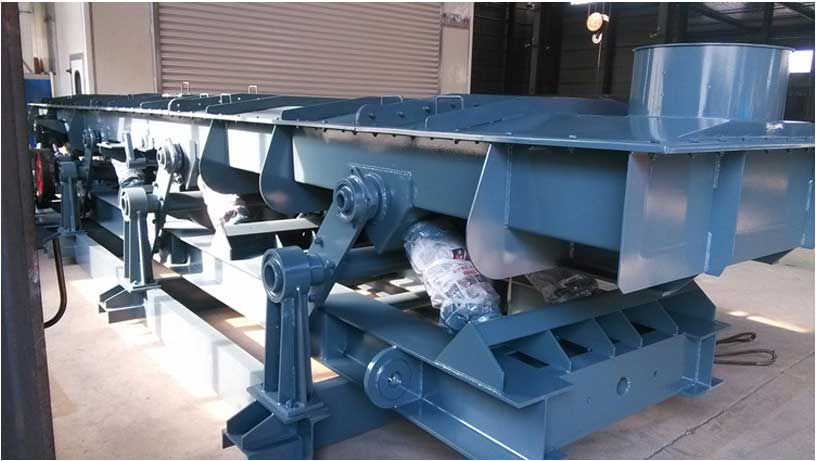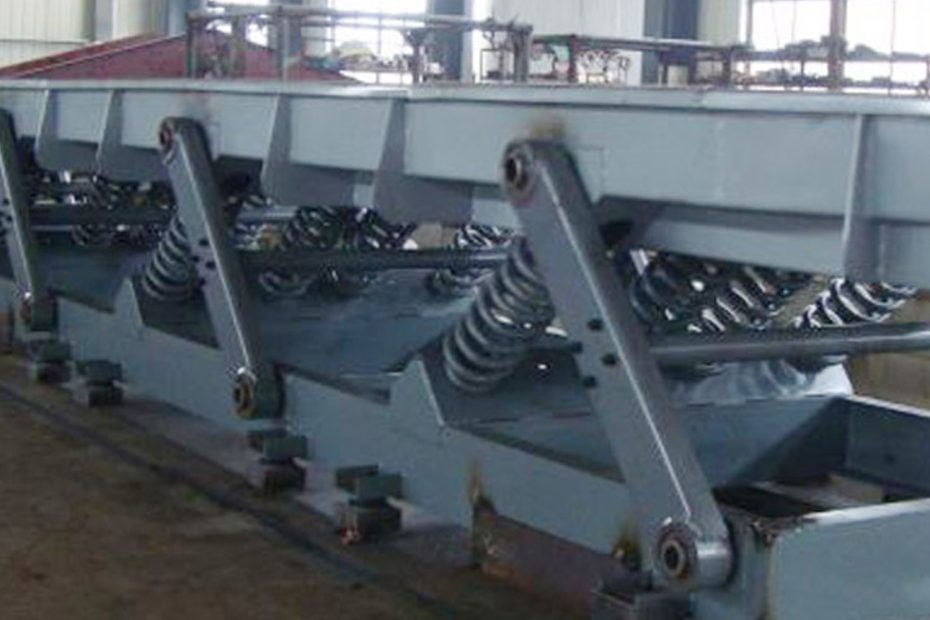The vibrating conveyor is a continuous conveying machine that uses an exciter to vibrate the material trough, thereby causing the material in the trough to slide or move in a certain direction. Vibrating conveyors are mainly used to transport loose block or granular materials at a horizontal or small inclination angle.
The elastic connecting rod conveyor is a near-resonance vibration machine that uses the rotation of the eccentric shaft (also known as the crank) to drive the connecting rod and the main vibration spring to drive the vibration tank body to achieve linear reciprocating motion to achieve material transportation. A vibrating conveyor.
Working principle of elastic connecting rod vibrating conveyor
When the motor drives the eccentric shaft to rotate through the triangle belt transmission, the driving connecting rod and the main vibration spring are used to excite the vibration tank body to make linear reciprocating motion in a certain excitation direction, thereby driving the materials and work to perform directional throwing motion to achieve vibration. purpose of transportation.
Structural composition of elastic connecting rod vibrating conveyor
The elastic connecting rod vibrating conveyor is composed of a trough, a frame, a vibration isolation spring, a main vibration spring, an electric motor, a triangle belt, a pulley, an eccentric shaft (crank), a driving connecting rod, a driving rubber spring and a supporting swing rod.
The tank body and the bracket are supported by rigid support swing bars and support springs respectively, and are connected by the main vibration spring, eccentric shaft, and driving connecting rod to form an excitation force source assembly. The frame is supported by a vibration isolation spring and is separated from the foundation. Dual structure.
When the motor drives the eccentric shaft (crank) to rotate through the triangle pulley, the driving connecting rod and rubber spring drive the trough to achieve linear reciprocating motion (linear vibration), thereby driving the material forward for directional throwing motion to achieve the purpose of transportation.

Advantages and characteristics of connecting rod vibrating conveyor
- Simple structure, high body rigidity, low overall height, easy to arrange and improve the working environment;
- Long conveying distance, stable amplitude and low energy consumption;
- The inclination angle of the tank and the excitation force can be adjusted through the adjustment mechanism;
- It has good shock absorption effect and is suitable for installation on floor slabs and steel structure supports;
- The guide support swing bar is made of steel plate, and the conveyor trough and the base are connected through a specially structured elastic hinge, which is strong and reliable;
- A sealed structure conveying tank can be used to achieve clean conveying and prevent dust from flying;
- The conveyor tank has little wear, is easy to maintain, and requires less maintenance.
Conclusion
The elastic link type vibration conveyor system is a highly practical vibration conveyor that is stable and reliable when vibrating.
